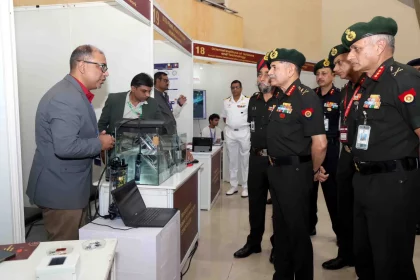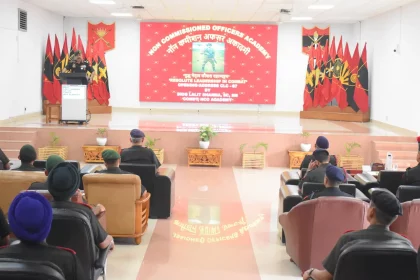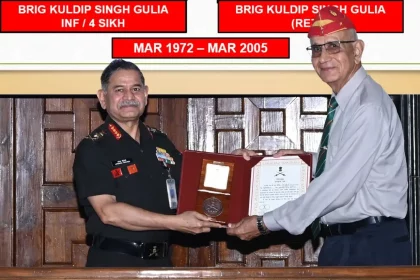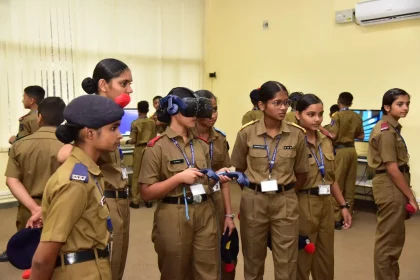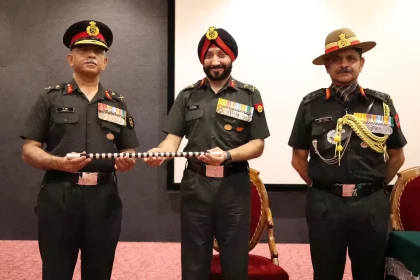COAS Highlights Academia-Military Synergy at T-SATS to Drive Defence Innovation
General Upendra Dwivedi Stresses Tech Clusters, Incubation Cells, and Start-Up Collaboration at T-SATS.
Combat Leadership Course Commences at NCO Academy, Dhana
NCO Academy, Dhana Launches Six-Week Training to Sharpen Leadership Skills and Battlefield Adaptability.
COAS Honours Veterans with ‘Veteran Achievers Award’ at Retiring Officers Seminar
Army Honours Veterans for Service Beyond the Uniform.
Sainik School Bijapur Cadets Visit MCEME Secunderabad on Motivational Tour
MCEME Showcases Innovation, Discipline, and Career Paths in Defence.
College of Defence Management Launches ‘Vartalaap’ – AI-Powered Offline Language Learning Model
Indigenous AI tool to revolutionise defence learning with secure offline access to academic resources.
Maj Gen K Mahesh Takes Over as Colonel of the 3rd Gorkha Rifles
Regimental Ceremony at Varanasi Marks Leadership Transition in the 3rd Gorkha Rifles.

